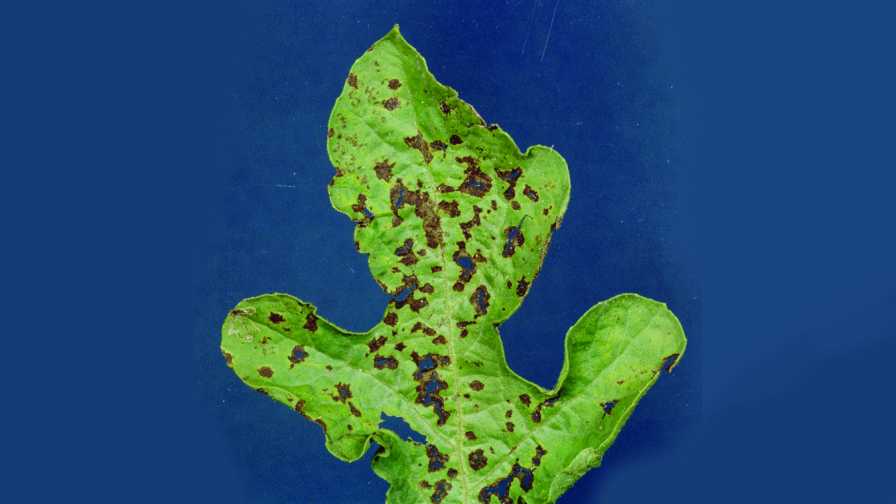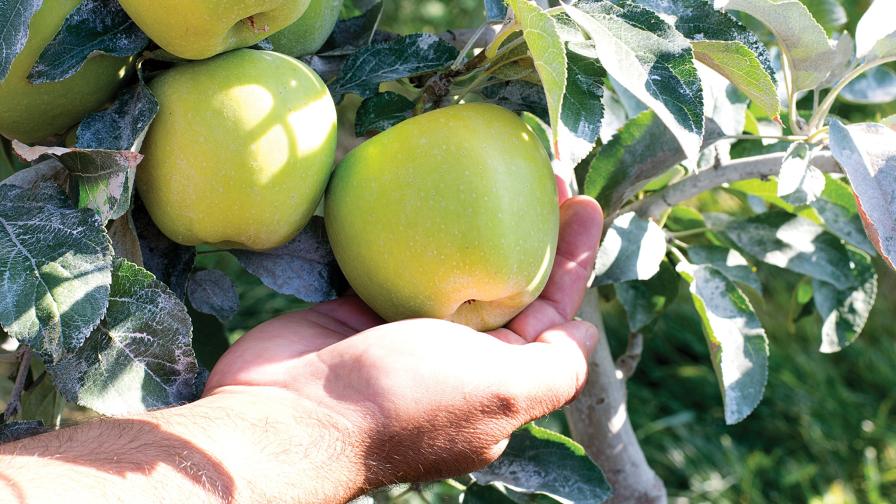Aim to Keep Anthracnose out of Your Cucurbit Crops

Most common in the Southern, Mid-Atlantic, and Midwest states, Anthracnose of Cucurbits is favored by high temperatures and frequent rains and high humidity, which promote disease development and spread.
Photo courtesy of Clemson University
Anthracnose, caused by the fungus Colletotrichum obiculare, is a destructive disease of cucurbits during warm and wet weather. Significant damage can occur to cucumber, muskmelon, and watermelon unless you grow resistant varieties. The pathogen rarely infects squash and pumpkins.
All aboveground plant parts can be infected. Symptoms vary among the three principal cucurbits infected. Leaf lesions begin as water-soaked spots, which typically become yellowish in appearance on cucumber. On watermelon, the spots turn dark brown or black. Leaf lesions on watermelon tend to be angular, and on cucumber and muskmelon they are more rounded. Foliar lesions are not restricted by leaf veins and often have cracked centers. Infected petioles and stems may develop shallow, elongated, tan lesions on melon, but the lesions are less obvious on cucumber. Stem lesions on muskmelon can girdle the stem and cause plant wilting.
The most striking diagnostic symptoms are produced on the fruit where circular, black, sunken cankers appear. When moisture is present, the center of the lesion is covered with a gelatinous mass of salmon-colored spores. Cankers lined with this characteristic color can never be mistaken for any other disease. When pedicels of young fruit become infected, the fruit may shrivel and abort.
Survival and Spread
The fungus survives on diseased residue from the previous crop. The pathogen also may be carried on seed. Under wet conditions, the fungus releases airborne spores (conidia) that infect vines and foliage.
The fungus depends on wet weather and fairly high temperatures, 75°F being considered optimum. Conidia do not germinate below 40°F, above 86°F, or in the absence of free moisture.
In addition, the pathogen must have water to free the conidia from their sticky covering in the fruiting body. The fruiting body is lined with microscopic stalks. The stalks produce the conidia, which amass in sticky, flesh-colored tendrils. As long as the tendrils remain dry, the conidia cannot escape, but water dissolves the mucilaginous covering and then rain drops can splash them several feet.
Anthracnose usually becomes established in mid-season after the plant canopy has developed.
Management Methods
Growers should implement a comprehensive preventative fungicide spray program along with appropriate cultural controls. Approved fungicides should be applied at regular intervals, and more often if frequent rains occur.
Cultural control methods include:
1. Use commercially produced, disease-free seed.
2. Rotate vine crops with unrelated crops in a three-year rotation.
3. Practice good sanitation by plowing under fruits and vines at the end of the season.
4. Choose anthracnose-resistant varieties if possible. Many pickling cucumbers and slicing varieties are tolerant or resistant, as are many watermelon varieties. No anthracnose-resistant muskmelon varieties are currently available for the Southeast.
Consult UF/IFAS recommendations of currently labeled fungicides for anthracnose control in Florida cucurbits.










